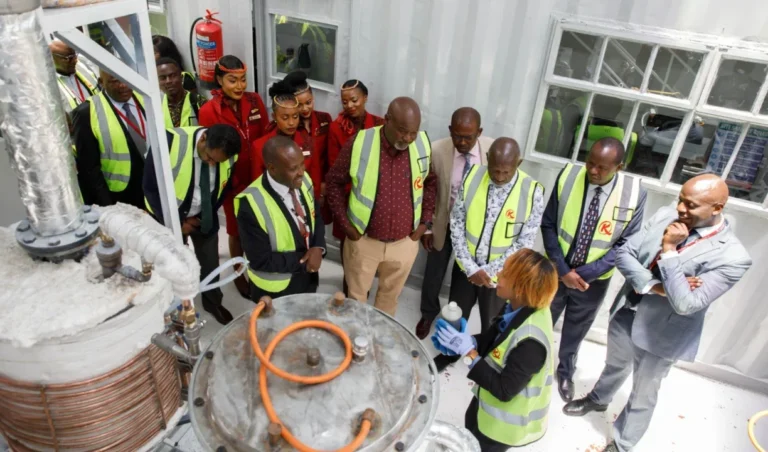Kenya Airways (KQ) has launched three strategic projects designed to advance sustainability. These include the Pyro-Diesel Plant, the expansion of the Water Bottling Plant, and the transformation of Msafiri House into a centralized operations hub. These projects are part of a larger, sustainability and strategic recovery plan dubbed Project Kifaru.
According to Kenya Airways the water bottling plant and the Pyro-Diesel Plant are key components of Kenya Airways’ sustainability efforts, and an innovative approach to cutting costs and reducing reliance on traditional fossil fuels while significantly lowering carbon emissions.
The Water Bottling Plant, with a capacity to produce approximately 4,500 litres per day, reduce Kenya
Airways’ reliance on external suppliers and significantly lower water procurement costs while generating
additional revenue through potential water sales.
Pyro-Diesel Plant which has a production capacity of 700 to 1,000 liters of diesel is expected to make a tangible impact on their operational costs, reducing fuel expenses and decreasing the environmental footprint of their ground operations.
Pyro diesel, also known as pyrolysis oil diesel, is a type of biofuel produced through the pyrolysis process. Materials such as biomass or waste plastic are heated in the absence of oxygen, breaking down into various compounds, including a liquid product that can be refined into diesel-like fuel. This pyro diesel can be used as an alternative to conventional fossil-based diesel, with potential environmental benefits like reducing waste and lowering greenhouse gas emissions.
This dual benefit underscores Kenya Airways’ commitment to sustainability and financial prudence. The
plants are expected to create additional employment opportunities as they scale up operations, further
supporting Kenya Airways’ commitment to sustainability and community development.
As part of significantly enhancing operational efficiencies, Kenya Airways has transformed its property,
Msafiri House, near its headquarters into a centralized Operations Control Centre (OCC) for its flight crew,
inflight management and fleet management.
This strategic move will streamline operations, improve team collaboration, and reduce travel time between different departments, thereby enhancing work efficiency and employee satisfaction while delivering significant cost savings by reducing airport access, parking charges, and rent expenses. Furthermore, Msafiri House will alleviate congestion at Kenya Airways’ Approved Training Organization (ATO) by providing additional training facilities, which are expected to generate additional revenue through increased training capacity.
Kenya Airways CEO Allan Kilavuka remarked, “These three bold projects align with Project Kifaru, our strategic recovery plan, which prioritizes financial sustainability, customer focus, and environmental responsibility. They also demonstrate the airline’s commitment to reducing its environmental footprint, improving operational efficiency, and contributing to Africa’s prosperity through responsible corporate practices.”

